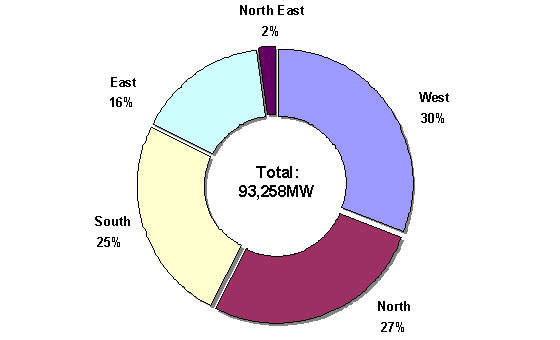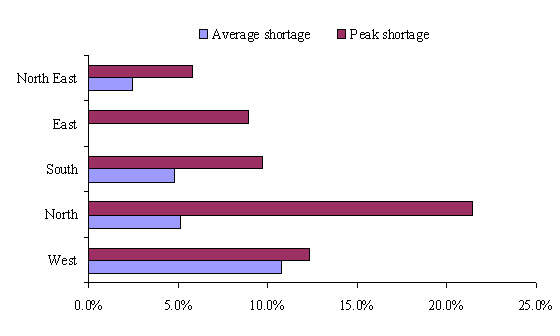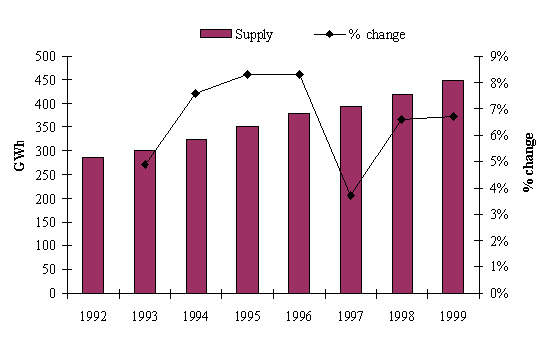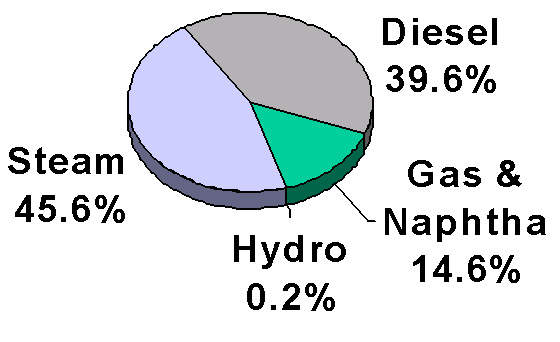Satluj Jal Vidyut Nigam (formerly Nathpa Jhakri Power Corporation Ltd) has run up all six 250MW units of the Nathpa Jhakri Hydroelectric Power project. Four of the units were commissioned, and the last two (Units #1 and 2) began working in March 2004, four months ahead of schedule.
As a whole, Nathpa Jhakri boasts the largest and longest headrace tunnel, largest desilting chambers, deepest and largest surge shaft and the largest underground power complex. The project added 1,500MW capacity to the Indian Northern Grid since the first unit was commissioned in October 2003. The Union power ministry is reportedly treating this as a benchmark for future hydroelectric projects.
SJVN was originally a joint venture between the central government, which provided most of the project funding and the state of Himachal Pradesh. Other collaborators include Jaiprakash Industries Ltd (JIL) of India, and the Corporation also involves Italian expertise.
Nathpa Jhakri project description
The Nathpa Jhakri project, which began in 1993, is for a 1,530MW installation on the upper reaches of the river Satluj in the Kinnaur and Shimla districts of Himachal Pradesh, in the foothills of the Himalayas.
The project includes a 60.5m-high dam and underground desilting complex and a 27MW Francis unit. It supplies Himachal Pradesh and the Northern Regional Grid States in India. A high-voltage transmission system (220kV) transports power from the Nathpa Jhakri hydro station to Haryana’s grid system.
Nathpa Jhakri construction
The original plan called for a five-year construction period, but a rockslide shortly after the civil contract was signed in 1993 required extensive stabilisation work, and the project had to be redesigned. Main equipment orders were placed in March 1994, and substations and other electrical equipment were ordered in October 1996.
The delay was aggravated by disagreements between the contractors and the sponsors. The further disruption came from labour troubles and alleged discrepancies between the bid documents’ data and actual site conditions.
In April 1999, the Union Cabinet approved the revised cost of Rs7,666 crore for Nathpa-Jhakri hydroelectric power project. The original cost estimate for the project was Rs7,217 crore.
Flash floods in August 2000 led to extensive loss of time and money to the project and caused so much destruction to the dam and powerhouse that the World Bank almost wrote off the project. Soon after it was taken over by the National Hydroelectric Power Corporation, employees worked round-the-clock to complete all restoration works to the pre-flood level. At the October 2001 and March 2002 review missions, the World Bank commended the phenomenal progress of works at the project sites and expressed its full satisfaction.
Hydroelectric power plant details
Eucona, a consortium of Kvaerner, ABB, Siemens, and Sulzer Escher Wyss won the $200 million main equipment order. Kvaerner Energy’s Oslo works supplied the six 255MW Francis turbines and Kvaerner Boving in the UK supplied gates and valves worth $35 million. It valued its share of the contract at $47 million.
ABB and Siemens split the generator business. ABB Kraftwerk supplied the rotary components of the generators and the cabling and safety systems. Siemens Power Generation Division (KWU) supplied the generator stators and bearing, and the excitation equipment.
Sulzer and Indian power engineering leader Bharat Heavy Electricals Ltd. (BHEL) provided related components and services. Impregilo of Italy and Foundation Corporation of Canada shared the construction work. Hindustan Construction Company (HCC) shared in Nathpa-Jhakri civil works contracts.
GEC Alsthom’s Power Transmission and Distribution Division (T&D) won the order worth $55 million to supply and install India’s largest gas-insulated substation at Nathpa Jhakri. Two 420kV substations were supplied from its Aix-les-Bains unit in France, one of which was installed underground, together with two 300m-long gas-insulated links. The substations feature a single-chamber circuit breaker ensuring increased reliability. The company is also training the substation’s personnel.
The Central Water Commission (CWC) and CEA were principal consultants, Nippon Koei (Japan) and Wapcos India were retainer consultants. In 2003, Electrowatt-Ekono AG (part of Jaakko Pöyry Group), was awarded a consultancy contract. The contract included tunnelling expert services, provided by Electrowatt Infra AG. The project received advice from organisations like the National Institute of Rock Mechanics and the Central Power Research Institute.
Finance for various elements for the project was provided by the World Bank and by banks in Finland, France, Germany, Italy, Norway, the UK and Switzerland.
Hydropower industry in India
India has one of the highest hydropower potentials in the world. There is potential for an installed capacity of over 150,000MW, and for an additional 90,000MW of pumped storage schemes. At a 55% load factor, the hydro schemes could produce some 82,5000MW of power.
However, of the total hydro potential in India, only 15% has so far been utilised, with another 7% under various stages of development. Turning opportunities into business proved very difficult in India and the share of hydroelectricity decreased to 25% of the overall national power generation capacity.
State electricity boards, the natural power purchasers, are struggling with poor finances, rate schemes that do not reflect costs, unpaid bills and intrusive political influence from national to the local level.
Planning and approval processes are cumbersome and fierce political opposition to foreign involvement dogs some projects. Moves to improve the opportunities for Independent Power Producers (IPPs) and to encourage more hydro development in the early 1990s met with little success.
A new policy for hydropower announced in August 1998 conceded that, in the immediate future, the major hydro projects would need to be developed by big federal hydroelectric utilities, which include the (then) Nathpa-Jhakri Power Corporation, as well as further inducements for IPP projects.







